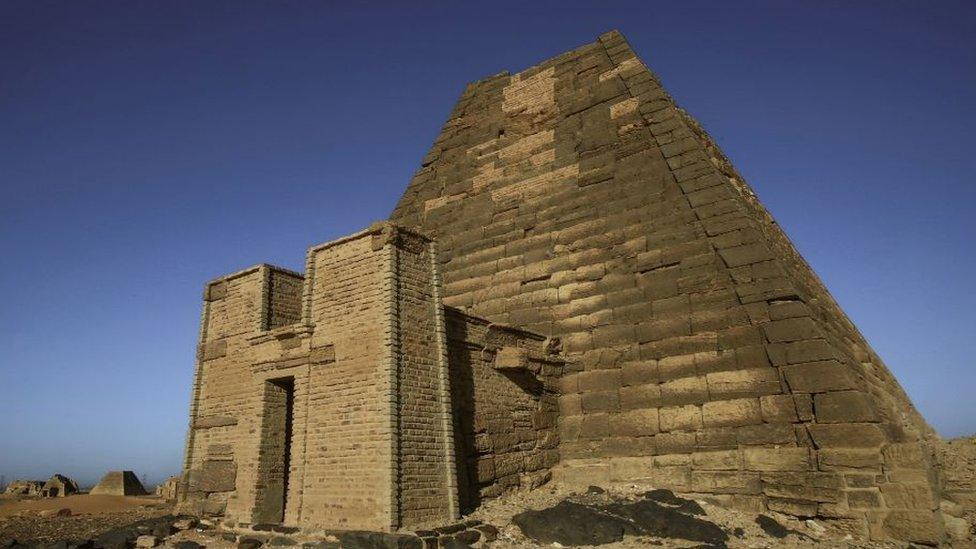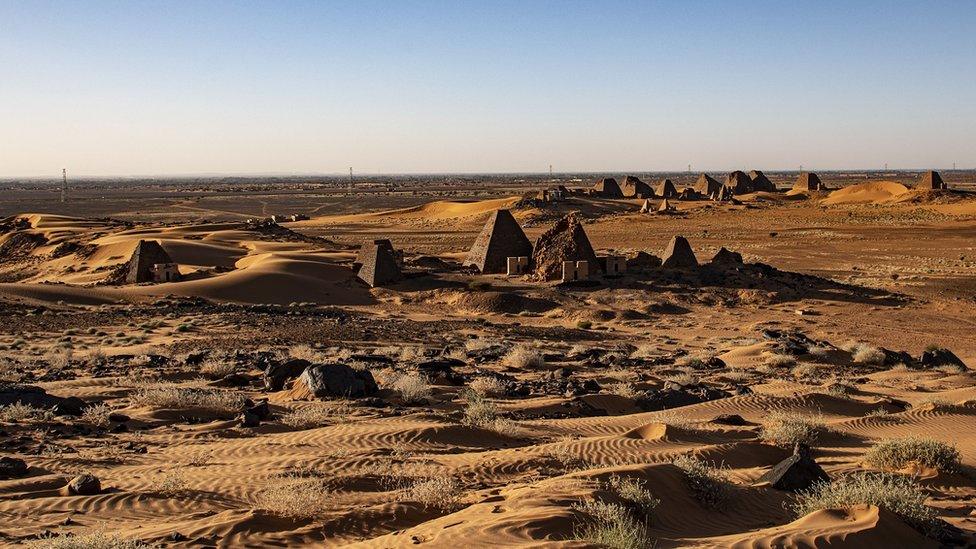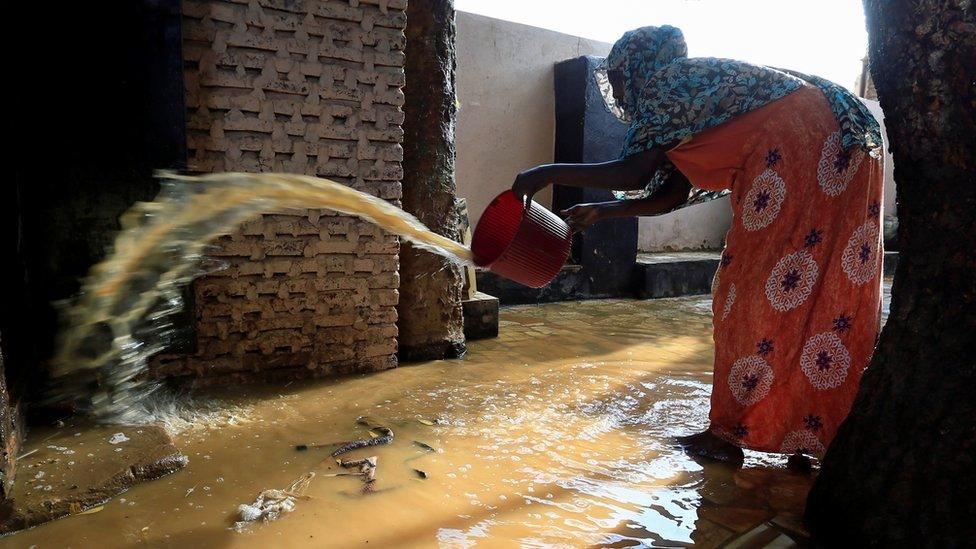Sudan floods: Nile water level threatens ancient pyramids
- Published

The pyramids at the site are more than 2,300 years old
The authorities in Sudan are trying to protect the country's ancient pyramids from flooding as heavy rains have caused the nearby River Nile to reach record-breaking levels.
They have built sandbag walls and are pumping out water, archaeologist Marc Maillot is quoted by the AFP news agency as saying.
The site is home to a host of ruins more than 2,300 years old.
Countrywide, floods have killed nearly 100 people and made thousands homeless.
The Nile regularly bursts its banks and farmers rely on the floodwaters to create fertile land, but the extent of this year's flooding is very unusual.
"The floods had never affected the site before," Mr Maillot is quoted as saying.
"The situation is currently under control, but if the level of the Nile continues to rise, the measures taken may not be sufficient."

The site is home to pyramids, temples, cemeteries and other relics.
The UN-designated World Heritage Site at al-Bajrawiya, external, which was the heartland of the ancient Kingdom of Kush, is normally 500m (550 yards) from the Nile, he added.
The area, 200km (125 miles) north-east of the capital, Khartoum, is home to hundreds of archaeological relics.
They comprise of pyramids, temples, palaces, cemeteries and other places of interest that "testify to the wealth and power of the Kushite State", a major power in the region for more than 1,000 years from the eighth Century BC, the UN's cultural organisation, Unesco, says.

Thousands of people have been left homeless by the flooding
The damage caused by the flooding across the country led the government to declare a three-month state of emergency last Friday.
More than 500,000 people have been affected in 17 of the country's 18 states, the authorities say.
The 99 recorded deaths have been caused by drowning, mudslides and buildings collapsing.

Residents in the capital, Khartoum, have been trying to protect their homes from the floodwaters
The level of the Blue Nile, which is the Nile's main tributary, has risen to 17.57m, AFP quotes the water ministry as saying.
This is the highest level since records began more than a century ago.
In Khartoum state alone, more than 100,000 people are in need of shelter after having lost their homes.
The UN's humanitarian organisation, OCHA, has warned that "the situation could deteriorate, external over the coming days".
It says that there are heavy rains forecast for neighbouring Ethiopia and parts of Sudan which could lead to a rise in the level of the Blue Nile.

Find out more about Sudan's pyramids:
Ben Zand visits a "lost" city of Nubian pyramids in Sudan
